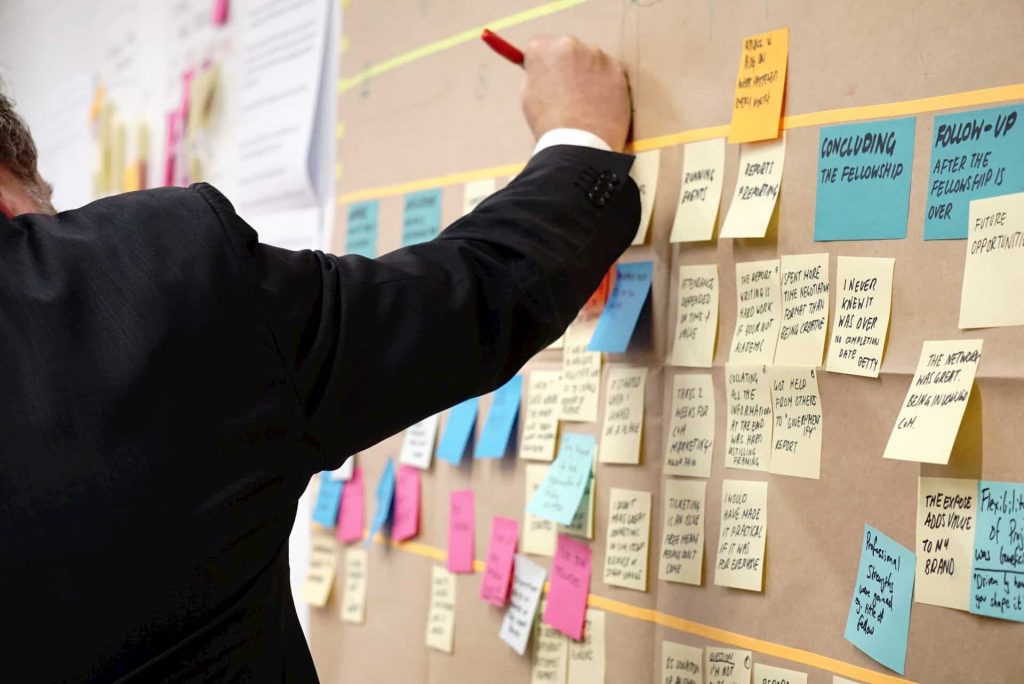True to form, in the midst of the US lockdown, Jon Anderson, Founder and CEO of Sidehill Group, took to the digital airwaves as a Featured Guest on “Intent Topics” hosted by Logan Kelly to share his insights and conjecture for driving strategic initiatives during life after COVID-19. A podcast series focused on modern intent-based sales, lead generation, sales prospecting, and digital marketing, Intent Topics has become a popular forum for leaders of sales organizations to find relevant topics and compelling guests.
Even a global pandemic couldn’t keep Jon from his passion and commitment to serve his clients and organizations who will need Sidehill’s help more than ever when the gloves come off and the new normal presents itself. A thought-provoking interview, Jon’s sentiment, and solutions will undoubtedly help companies prepare for what lies ahead when they emerge from their homes and remove the face masks to address the aftermath of COVID-19.
Sidehill Well-Positioned To Drive Change in the Aftermath of COVID-19
Naturally, given Sidehill’s business model to focus on strategic topline advisory, they work with companies of all shapes and sizes on sales strategy and to drive consistency in revenue growth. Sidehill helps companies move the needle on strategic initiatives more successfully, more rapidly, and more effectively by helping leadership teams get their sales organizations moving in the right direction.

Maintaining Momentum with Added Complexity
Jon explained that “One of the more common questions I am hearing from leaders right now is if in times of unexpected turbulence, is it better to adjust the strategic “goalposts” or to accept the setback and stay the course? In the best of times, maintaining momentum with strategic initiatives is a challenge, but current conditions have added additional complexity.”
What leadership teams are currently thinking as they start to process how they can save their companies post COVID-19, what will be required? Will they even be able to come back from this halting of the world? Depending on the industry, the individual scenario of each company must be assessed separately and distinctly, there is no one size fits all for strategically repositioning every company in the entire world. According to Jon, the first and most critical step is to get everyone in an organization moving in the same direction.
When asked about what he is seeing in the market, Jon explained that what is happening and all the changes economically, personally as well as professionally is a microcosm of what normally happens in business when a change has occurred in the market, or by a competitor, or new technology presents itself. Organizations have to rethink not only what they are going to do in the short-term which brings massive uncertainty from one day to the next but also once things start to normalize.

How are the impacts of new normal going to affect companies?
Companies are already considering how their business will adjust? Where is the business going? How will it get there? Jon explained, “In the short-term leaders are focusing on:
- Objectives to keep their teams motivated and busy. Once that effort is exhausted and they run out of options, they move on to number two,
- What do we need to put in place to get the operations back running when the time comes and,
- What does the new normal look like and how to move the company forward from there?
With 80% of all strategies failing and only 62% of planned revenue actually earned leaders are asking how to adjust and move forward. Historically, leaders planned a quarter in advance only to find that the excitement generated at the management sessions died out quickly, making a quarter a lifetime away. But Jon has implemented a system at Sidehill that is working both strategically and tactically for clients.
The Root Cause – Overzealous or (mis) Understanding
As just mentioned, most company’s bring together their senior teams for quarterly management meetings. Upon leaving the sessions, each leader enthusiastically commits to shifting the focus to the improved execution. They take the new plan back to their teams with monumental excitement. And, within a matter of weeks sales start to lag again, motivation is weak, sales prospecting is not materializing and the company is back to square one.
What happened? Humans Live Where They are Most Comfortable
This very normal occurrence happens when the department leaders get back to their desks and resume their responsibilities. Human nature dictates that a person will default back to the tasks and tactics that they are best at and enjoy most. They start believing that the other members of the leadership team are not pulling their weight either so no manager is going to invest in the big picture if other departments aren’t doing the same. This would cause their individual department contributions to decrease. They lose sight of the direction of the new initiative. So then all goes full circle and the CEO is upset about why so many of his top leaders who were committed only weeks ago are back to their same lackluster results.

What is the CEO to do?
First, the CEO calls Jon Anderson at Sidehill and after Jon shares this post with the leader and explains.
- The CEO has to force the entire organization to move in the new direction each week. They have to change the focus from looking out a full quarter to a weekly emphasis. Each week the CEO has to measure and review the results and hold the teams accountable and then do the same thing every week thereafter.
- Everyone must be reminded of the importance of the new initiative. Each leader needs help reaching their individual goals which will help the organization meet its goal as a whole. As each leader is assisted individually, the whole organization will move forward at the same time.
- Shifting acceleration KPIs each week instead of each month or quarterly-measuring week to week effectuates changes faster
No Silos – One Company
During times of rapid change, the whole situation is exacerbated. This is where Sidehill comes in to help these organizations figure out what the right KPIs are that need to happen at each seat each week so that everyone is doing what they are supposed to move the entire organization forward. On such a large scale the implementation and execution start to increase by an order of magnitude as more people become engaged. Sidehill helps build the toolkit on a large scale. During these times companies need to be doubling down on outbound communication with clients, recognizing which clients are worth greater time and investment, cultivating the most likely candidates for revenue contribution. Sidehill helps its clients identify which customers their clients should be most focused on. By stuffing the top of the funnel now, when the world reopens these companies will be prepared to grow.
